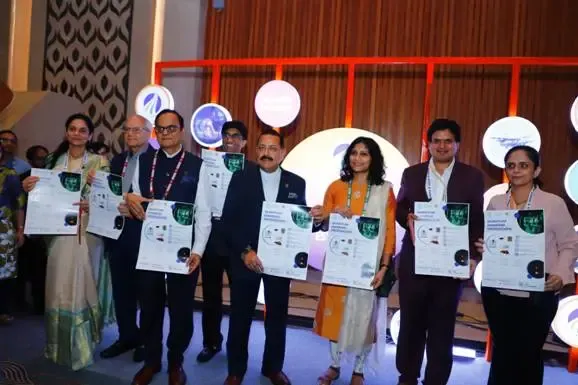Has India Launched Its Own Quantum Diamond Microscope?

Synopsis
Key Takeaways
- Indigenous Technology: India’s first Quantum Diamond Microscope developed at IIT Bombay.
- Dynamic Imaging: Capable of 3D magnetic field mapping.
- Robust Quantum Coherence: NV centres maintain sensitivity at room temperature.
- Applications: Useful in neuroscience, materials research, and microelectronics.
- Future Potential: Integration with AI/ML for advanced diagnostics.
New Delhi, Nov 12 (NationPress) A dedicated team at IIT Bombay, working under the auspices of the National Quantum Mission (NQM), has successfully created India’s inaugural indigenous Quantum Diamond Microscope (QDM), designed for dynamically imaging magnetic fields. This innovation represents a significant advancement in the field of quantum sensing, as announced by the government on Wednesday.
Unveiled during the Emerging Science Technology and Innovation Conclave (ESTIC 2025), the QDM has the capability to create 3D magnetic field maps within an encapsulated semiconductor chip. According to an official statement, this achievement has also secured India its first patent in this specific technological domain.
Developed by the P-P-P-Quest Group at IIT Bombay under the National Quantum Mission (NQM) of the Department of Science and Technology (DST), the QDM utilizes nitrogen-vacancy (NV) centres in diamond, serving as a robust platform for high-resolution magnetic field imaging at the nanoscale.
The statement elaborates that NV centres—which consist of atomic-scale defects from a nitrogen atom adjacent to a vacancy—demonstrate excellent quantum coherence even at room temperature, thus making them highly sensitive to variations in magnetic, electric, and thermal fields.
The Ministry of Science & Technology highlighted several applications, indicating that the QDM opens doors to direct, high-resolution 3D mapping of integrated circuits, batteries, and microelectronic devices.
With promising implications in neuroscience and materials research, the QDM could revolutionize the non-destructive analysis of semiconductor chips by facilitating the mapping of magnetic fields in 3D layers within an encapsulated chip.
Its spin-dependent fluorescence, captured through optically detected magnetic resonance (ODMR), allows for the optical readout of local magnetic fields.
By engineering a thin diamond layer with a high NV density, the QDM supports widefield imaging of dynamic magnetic activity, akin to an optical microscope.
The team has ambitious plans to further develop a quantum imaging platform that will merge QDM with AI/ML-based computational imaging, paving the way for enhanced chip diagnostics, biological imaging, and geological magnetization studies.









